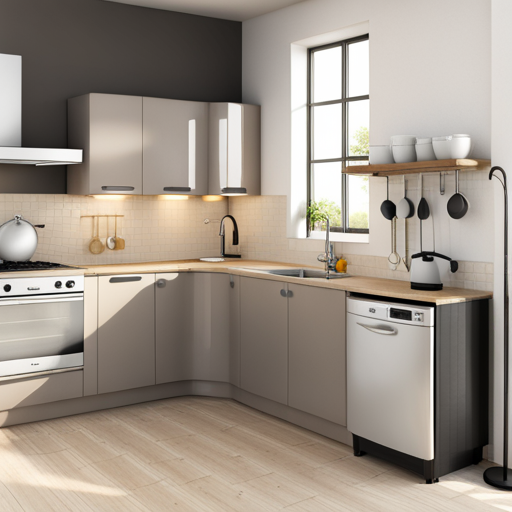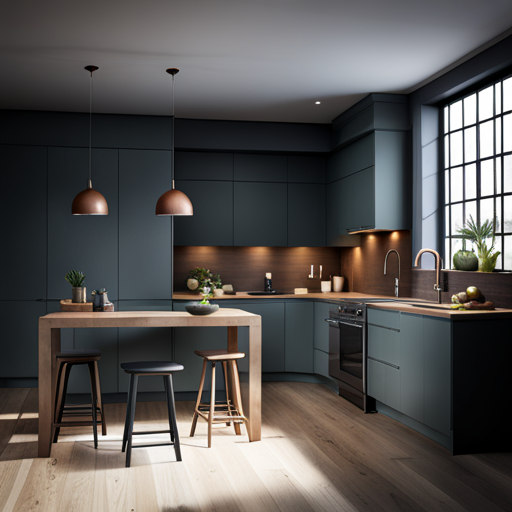Are you someone who loves to stay ahead of the curve in home décor trends? If so, this is the moment you’ve been waiting for — we’re officially entering a new era where small spaces are no longer confined to bland neutrals. In this article, we’ll explore how the cozy era is embracing the use of moody colors to inject character and depth into your living area, proving that size does not limit the creativity that can be expressed through rich and dark hues.
Read more: Entering the Cozy Era: Moody Colors for Small Spaces
The Beige Blitz: A Look Back
Over the past couple of years, beige and various neutral tones have dominated the design scene, particularly within small living spaces. The rationale was a sensible one — lighter colors tend to create an illusion of spaciousness, making smaller rooms feel larger and brighter. Minimalism also played a significant role, encouraging many to strip back and simplify their living spaces to promote a sense of calm.
However, while calming, beige and neutrals didn’t always translate to a homely or inviting space. As we revise our decorating ethics, it’s increasingly evident that a cozy home isn’t necessarily a brighter one—contrast this with the growing need for personal sanctuaries in our homes, it’s time for a shift.
Diving into the Moody Hues
The pendulum is now swinging towards a more expressive approach to small space design. We’re seeing more homeowners, especially in urban settings, opting for deep, moody colors, from accent walls to color drenching a room. These hues create a cocoon-like effect, enveloping you in warmth and comfort. Think midnight blues, hunter greens, rich burgundies, and earthy charcoals. They might not make your room feel physically bigger, but they certainly expand the perception of its boundaries, creating a sumptuous, ‘tucked away’ feel that’s hard to resist after a long day.
Deep Blues: The Blue Hour in Your Living Room
Blue, the color of serenity, works wonders to establish an ambience of tranquility in a small living space. Deep navy shades are particularly on trend, with a regal and calming presence. These hues pair wonderfully with metallic accents, like brass or gold, to add a touch of luxury without overwhelming the space. Combine them with warm, natural materials such as wood and rattan to create a balanced ecosystem, making your living area the ideal spot for unwinding after a hectic day.

The Power of Green: Verdant Vibes in the Kitchen
In spaces where we rediscover our love for cooking and gathering, like the kitchen, green tones can reign supreme. They bring in a connection with nature and a restoring energy that’s perfect for communal areas. Forest greens, bottle greens, and even mossy tones serve as a splendid background for those culinary adventures. Hanging plants and open shelving act as excellent companions to this moody green palette, highlighting the organic synergy green evokes within the small space.
The Mystique of Metals: Pairing Dark with Light
Small spaces often mean careful consideration of every detail. When it comes to incorporating those alluring moody colors, an interplay of metallics can be incredibly effective. Copper and bronze accents can warm up darker spaces, while silver and nickel can lean into a cooler, more contemporary feel. The secret here is to ensure that the metals, like your colors, contrast appropriately. Too much of one, and the balance can tip, diminishing the impact of these dramatic color choices.
Shying Away from the Trends and Towards Your Vision
While it’s engaging to explore the macros of color and design trends, it’s essential to remember that your home is an extension of your personal narrative. If you’re not particularly drawn to the idea of a complete transformation into moody hues, consider a more piecemeal adaptation.
Start small — a boldly colored statement wall, richly toned furniture, or even just a collection of atmospheric art can set the mood without overwhelm. After all, the true essence of home is comfort in your environment, expressed on your terms.
Lighting the Way
Lighting, both natural and artificial, is critical in small space decor to ensure that the chosen moody colors don’t eclipse the room’s functionality. Use a mix of ambient, task, and accent lighting to create layers of illumination that can balance out the darkness of your chosen palette. Yellow-tinted bulb light particularly draws out the warmth of your moody colors without adding glare.
The Finishing Touch: Texture
The introduction of texture is the final act in our moody color play. Think velvet cushions, chunky knit throws, and a myriad of soft, tactile materials. This is where your room starts to feel inviting and relaxing. The amalgamation of textures can soften harsh lines and add a sense of depth, ensuring that your small space remains as visually stimulating as it is comforting.

Implementing the Change
Adopting moody colors in a small space may seem intimidating at first, but it’s a change that can be exceptionally rewarding. The first step is to have a clear idea of the mood you want to create — whether it’s sophisticated, mysterious, or simply cozy. From there, it’s a matter of choosing the right color for the right space and ensuring a playful balance that aligns with your personal taste. It’s not just a visual change; it’s an emotional transformation that creates a space you want to retreat to time and again.
Living the Moody Life
This new cozy era of moody colors is not only a trend but a testament to our collective yearning for personal spaces that resonate with our soul. Whether you’re embracing it wholeheartedly or with cautious steps, the era of small spaces filled with moody color is here to stay for a while — and who wouldn’t want a home that invites them to linger a little longer, wrapped in a comforting sense of luxury? It’s a movement that promises to deliver a living experience far beyond the four walls we call home.
